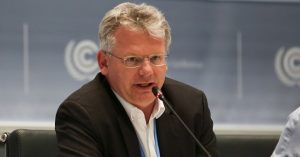Global warming can still be limited to 1.5°C by 2100 while ensuring that the poor are not hit hardest by climate policies and climate impacts.

This is achieved by immediately introducing broad carbon pricing together with re-distributive policies using carbon pricing revenues and further measures to reduce energy consumption, accelerate technological transitions, and transform the land sector.
The results from multiple integrated assessment models (IAMs) show that a combination of producer and consumer-oriented measures can work together to rapidly reduce emissions.
The comprehensive results on 1.5°C pathways in line with the Paris Agreement are synthesised in a report of the European project NAVIGATE. The new report, presented at COP28, provides a blueprint for achieving a rapid, fair and efficient transformation to net zero emissions.
“Only the combination of producer- and consumer-oriented policies can realise the full emission reduction potential in all sectors,” says Elmar Kriegler from Potsdam Institute for Climate Impact Research (PIK), coordinator of the NAVIGATE project. “Their combined and immediate implementation can substantially accelerate climate action and close the gap to a pathway limiting warming to 1.5°C by 2100.”
The results from NAVIGATE also show that re-distributive policies buffer the impact on poor households while allowing them to reap the benefit of avoided climate impacts in the longer term. This demonstrates that a global net zero transition done right not only safeguards the climate but also protects against worsening global inequality.
The NAVIGATE report spells out how such transitions play out in the energy, transport, industry, buildings and agricultural sectors. For example, the modelled rapid industry transition is based on a rapid decarbonisation of electricity generation, a strong electrification, an accelerated introduction of clean fuels, increased circularity in carbon intensive industries like the steel industry, and the deployment of carbon capture and storage cutting carbon emissions by 55-90 per cent until 2050.
At the same time, income inequality is consistently reduced in 1.5°–2°C mitigation pathways compared to the case of unabated climate change, due to a combination of redistributive policies and the avoided increase in inequality from climate damages.
Rapid supply-side transformation is essential for achieving emission neutrality
“Based on the next generation of Integrated Assessment Models (IAMs), this report shows that a rapid supply-side transformation is essential to decarbonise energy use and industrial production, which is crucial for achieving emission neutrality,” author Jessica Strefler from PIK says.
“However, an early transformation of energy consumption reduces emissions especially in the short term, and the lower energy demand reduces the pressure on the transformation. Advanced land use measures including technical measures as well as dietary changes and reduced food waste are crucial to reduce greenhouse gas emissions other than CO2, thus enabling net-zero emissions as well as a lower peak temperature well below 2°C,” adds Strefler.
The EU-funded NAVIGATE project aimed at developing the next generation of advanced IAMs that better describe transformational change and winners and losers of the transition. IAMs support climate policy making by combining energy, economy, land, water, and climate into a consistent modelling framework to analyse global climate-change-mitigation pathways. NAVIGATE improved the capabilities of IAMs and increased the usability and transparency of IAM results.
The project was coordinated by PIK and conducted by 16 research institutions from Europe and two institutions from Brazil and China.
